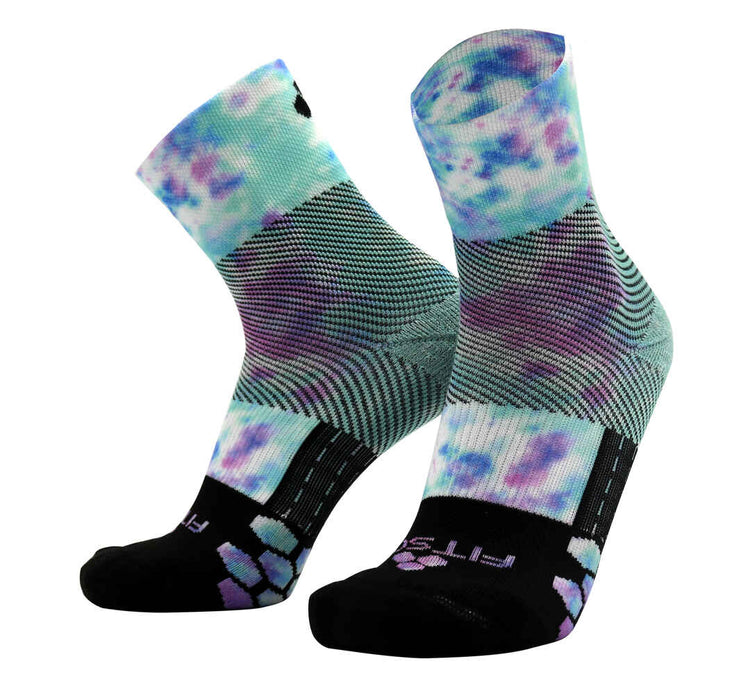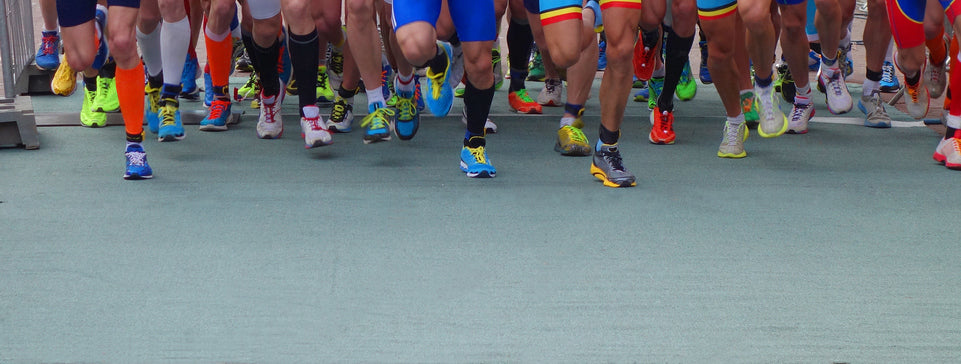According to the American Psychiatric Association, 5% of Americans each year suffer from the effects of SAD. Seasonal affective disorder is a change in mood that begins either during autumn and lasts until the end of winter or begins during spring and ends in autumn. Most people who suffer from SAD find it happens during winter when the daylight is shorter.
These winter blues are more than just cabin fever; even usually cheerful runners can experience these feelings of lethargy, sadness, anxiety, and depression once daylight changes. How do you fight through SAD, and how can running fight seasonal affective disorder? Let's dive in!
What are the Most Common Symptoms of SAD?
In most cases, the symptoms of SAD occur during late fall and early winter and go away during spring and fall sunnier days. If you feel 'the winter blues' every year, or less commonly, symptoms that begin in spring or summer—that go away every year when the season changes, you might suffer from SAD. Symptoms can include:
• Feeling listless – having little to no energy and unable to find enthusiasm for things you once loved and finding it difficult or unwilling to do anything that needs effort
• Feeling sad for most of the day
• Find yourself sleeping too much
• Experiencing intense carb cravings, overeating, and weight gain
• Have difficulty concentrating
• Feelings of hopelessness, or being unworthy or guilty
• Having thoughts of not wanting to live
• Increased irritability
When to Speak to Your Doctor
It is perfectly normal to have days where you feel down. But if you find that it has been more than a week of feeling this way, that you can't seem to stop the hopelessness and are no longer motivated to do any of the things you enjoy—you should consider seeing a healthcare professional.
How Do You Motivate Yourself to Run When Depressed?
How can you combat the symptoms of SAD when it's making it seem like an arduous task to wake up and get out of bed? If you've suffered from depression or other mental illnesses before, many of you are no doubt nodding along and saying there is no easy fix. Getting you back to feeling like yourself or close to it may take a combination of light therapy, therapy, medication, and healthier lifestyle habits.
As a runner, you already have the advantage of starting healthier habits. But if you suffer from SAD, motivating yourself to do it can be an entirely different story. One of the small ways you can do your best to fight SAD symptoms is by starting with getting more light. Other tips you can try:
• Think about what you used to enjoy about running, and then set small, easy-to-obtain goals. If getting up, getting dressed, and going out or hitting the gym for a run feels like too much, why not run in place at home? You could also put on your favorite songs and dance to the music from start to finish.
• The 5-Second Rule. Whenever you think you shouldn't run, count backward from 5, throw on your running clothes and shoes and walk around in them. Putting on your athletic wear and shoes might motivate you to follow through.
• Reach out to a friend. When you have a buddy to run with, that can help motivate you to show up while providing you with some social interaction you may miss.
• Be kind to yourself. Pushing yourself to be active in the middle of depression is complex. Your best motivation may be to be gentle with yourself and be proud that you woke up and got out of bed today.
Simple Home Hacks for Combatting SAD
• Clean and declutter. If you can manage it, creating a cleaner and less cluttered environment can help ward off seasonal melancholy, especially if you spend more time indoors working from home. Spring may be associated with deep cleaning, but if you suffer from SAD—rethinking how your home is set up and tackling the clutter before the SADs hit may be a great idea.
• Maximize the amount of natural light you can get. For instance, consider moving your bed near the window and facing it toward the morning sun. Ensure your windows are clean and clear, letting in as much sunshine as possible during the day.
• Investing in a lightbox or light therapy lamp that mimics outdoor light every day for 20-30 minutes may help significantly.
Embrace the Run, Long or Short
Exercise, especially endurance sports like running, helps combat the effects of SAD, especially if you run outside. Schedule your run in the daylight hours to help boost your mood and get as much light as possible. Getting more sunlight and fresh air will help lift your spirit while giving you that essential dose of Vitamin D to help you cope with the season.
Running may also help lift your mood with the release of endorphins. Commonly known as 'runners high,' for some people, the endorphins can be as productive as a cognitive therapy session or medication. Scientists believe there's strong evidence that outdoor exercise can also release serotonin (known as one of the happy hormones.)
Running remains a compelling means to combat SAD, and pairing it with sunlight or light therapy can help you avoid the worst symptoms. Even if you can't make yourself run today, pottering around to shovel snow, digging in the garden, taking a quick walk outside, or taking a 10-minute bike ride can be an immense help.
Remember to be kind to yourself. Nobody is perfect, and you might be your own worst critic. Running won't make your SAD symptoms disappear overnight, but it is an excellent tool to add to your belt in managing the symptoms. When you struggle with SAD, life often feels like an uphill battle, masking your excitement for the things that used to make you feel happy. Running can help make your brain process these situations differently, allowing thoughts to come in and out of your mind, and is a great way to burn anxiety and stress.
Every step is a push against the symptoms of SAD, even the small ones! Every little you can do can help, and we hope we've been able to shine a little light your way to help you fight Seasonal Affective Disorder!







Leave a comment
This site is protected by hCaptcha and the hCaptcha Privacy Policy and Terms of Service apply.